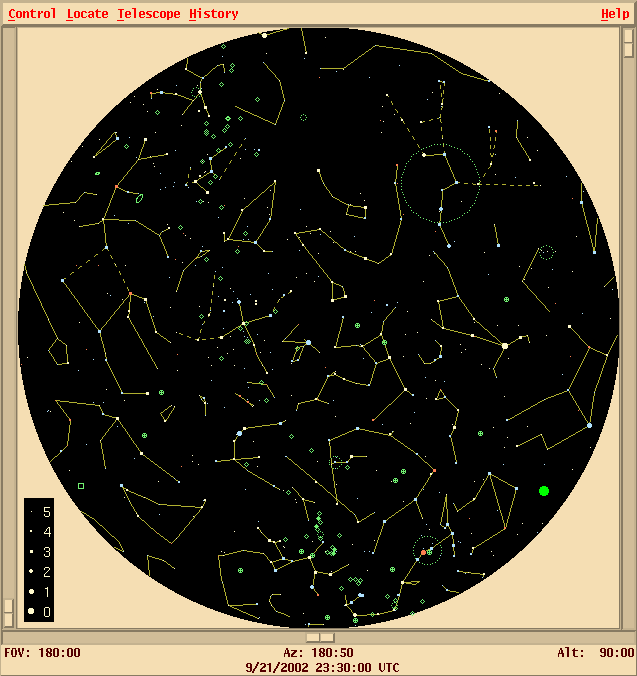
 Copyright © Michael Richmond.
This work is licensed under a Creative Commons License.
Copyright © Michael Richmond.
This work is licensed under a Creative Commons License.
If you look to the south, early in the evening, you will see the constellation Sagittarius:

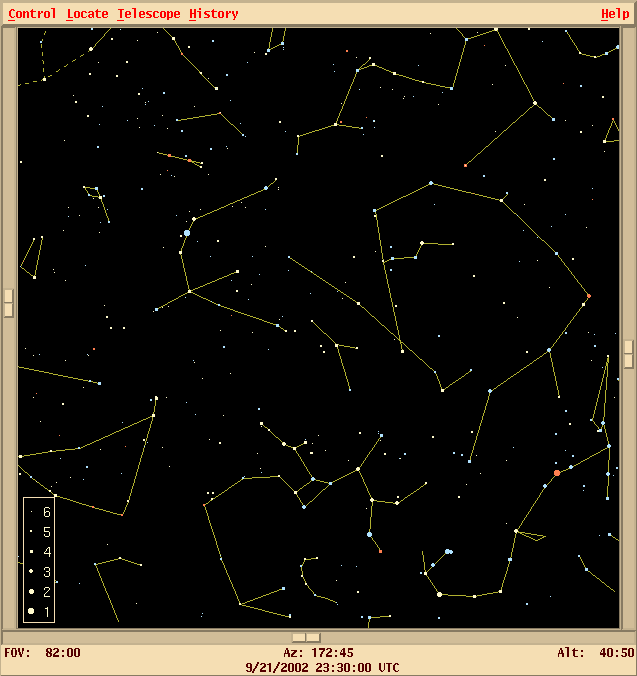
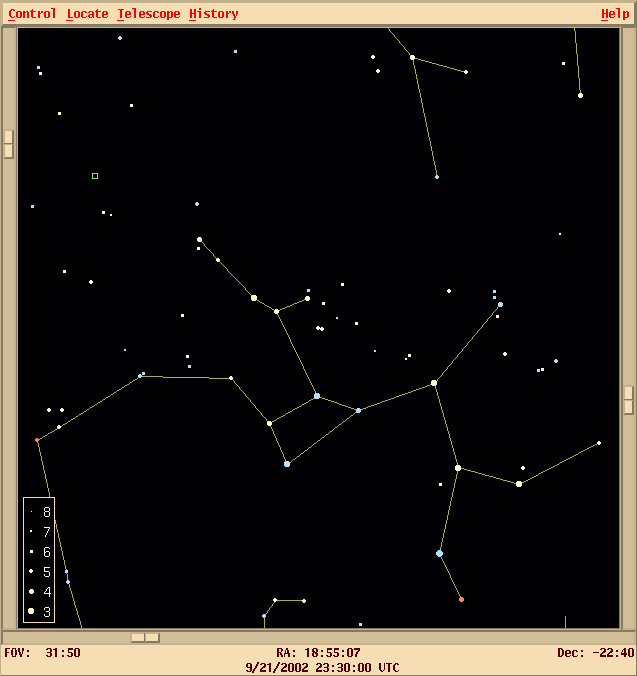
If you look just above the "handle" of the "Teapot", you should see these stars:
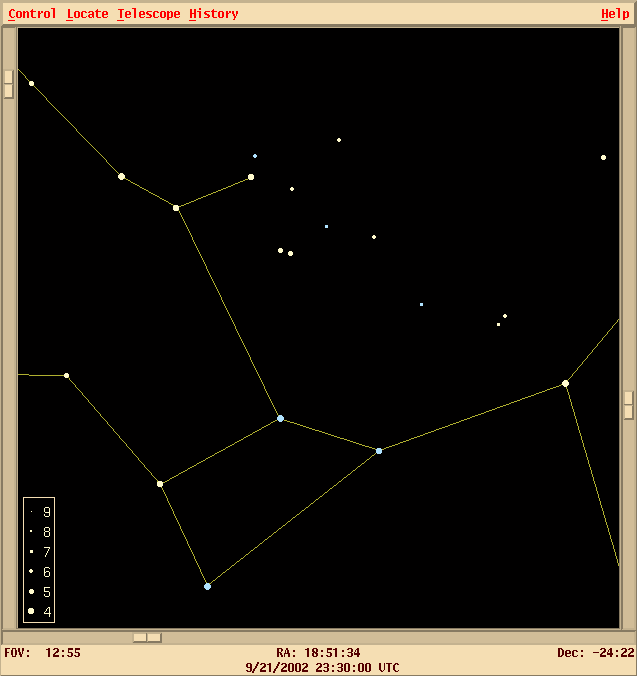
But on Thursday night, September 19, 2002, Japanese astronomer Toshihiko Tanaka took a photograph which didn't match the charts.
Let's compare these, side-by-side.
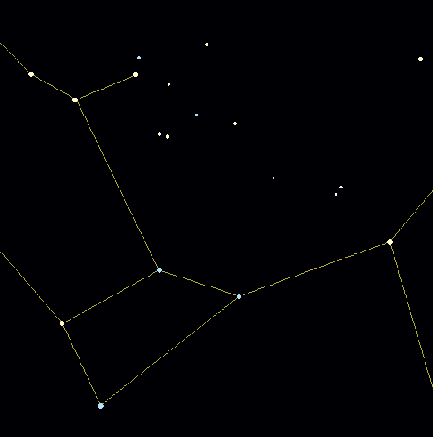
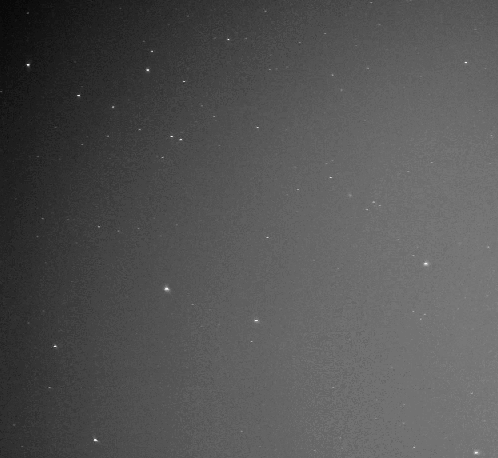
Tanaka-san didn't notice anything immediately (probably because he had to develop the film). The next night, Friday September 20, 2002, another Japanese astronomer, Katsumi Haseda, photographed the same field. He examined his picture, and noticed that there was a "new" star in Sagittarius.
If you can't find the new star yourself, check out an annotated version of Tanaka-san's photo.
Haseda-san sent a report to VSNET, a network of astronomers who monitor variable stars and other interesting objects.
On Saturday, Sept 21, at 01:17 UT, Taichi Kato of VSNET sent an alert out via VSNET. Less than half an hour later, Doug West (in Kansas, USA) confirmed that an object was present at the same position. Jaime Garcia (in Rama Caa, Argentina) also confirmed the report about two hours later.
You can follow the star's evolution in brightness by going to http://vsnet.kusastro.kyoto-u.ac.jp/vsnet/etc/drawobs.cgi?text=SGRnova2002-3 (but make sure your browser can handle Java first!)
So it was a real object -- but what kind of object?
Over the next few hours, Doug West and Mitsugu Fujii of Fujii Bisei Observatory in Japan acquired spectra of the new object. West's spectrum (taken with an 8-inch telescope!) is shown below.
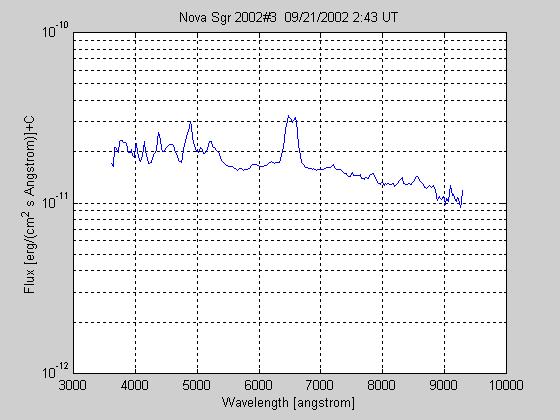
And here's Fujii-san's spectrum:
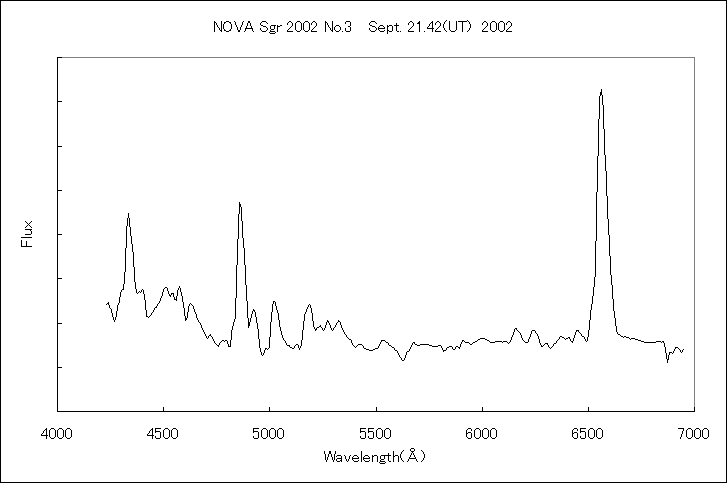
The strong emission feature at roughly 6500 Angstroms, due to excited hydrogen atoms, is a common feature of novae (singular "nova"). This star has been designated
Nova Sgr 2002 number 3
(because there have already been 2 other novae in Sagittarius
so far this year!).
Several days after its discovery, it was officially assigned
the name
V4743 Sgr
which means "the 4743rd variable star found in Sagittarius."
This name is to be preferred.
If you look very carefully at old photographs of the nova's position in the sky, you can see a very faint star:
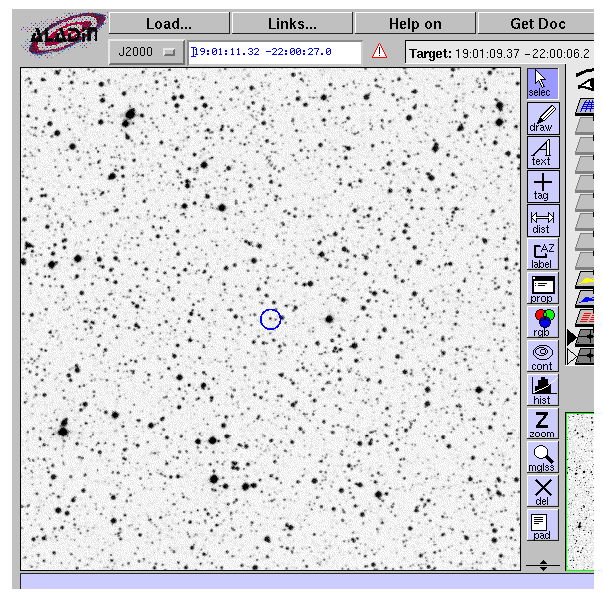
The nova is about magnitude 6, whereas this faint star was only magnitude 17. That means that the nova is about 25,000 times brighter than the faint star. Assuming that the two are really the same, how could the star increase its brightness so much?
To find out, you'll have to wait until week 9 ... but here's a hint in the meantime:
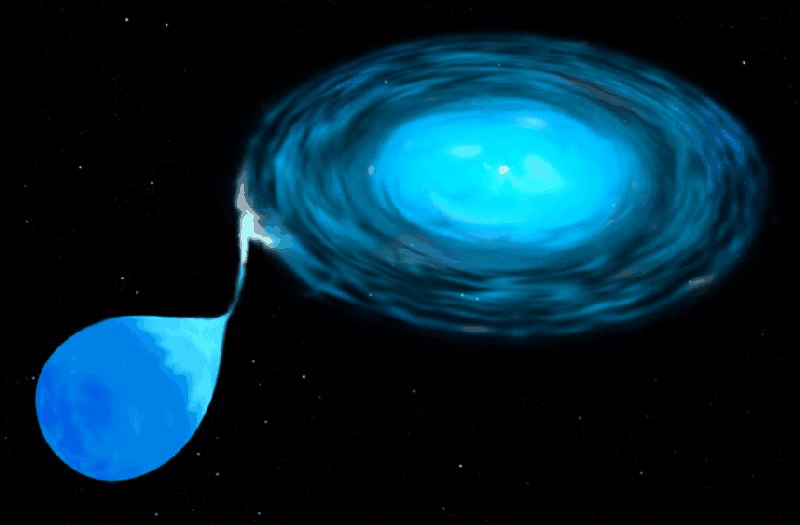
This sad story posted to VSNET on Sep 23, 2002.
Fraser Farrell writes:
Readers may be interested to know the circumstances surrounding my independent discovery of V4743 Sgr.
I was camped by the shore of Lake Eyre (Australia's biggest lake) at the time - far from any phones or Internet connections! - during a site investigation trip for this December's total eclipse. Here's the relevant bits from my trip report:
- - - - "The last time I was here - in 1992 - the Lake was full of floodwaters. Tonight it was totally dry, with a salt crust as hard as concrete. "Because of the full moon and a strong wind raising dust, the sky on Saturday night was nowhere near as dark as it can get out here. But with a chart of the recently discovered Nova Sagittarii 2002 #2 in hand I decided to get the 8x42 binoculars out anyway. Found #2 at magnitude 7.9. Looked at a few other variable stars too. Then while hunting down some of the fainter Sagittarius blobs shown in Sky Atlas 2000, I noticed the star pattern east of M22 was a bit odd...there was a new 6th magnitude object visible. Assuming it was an asteroid, I sketched its position. After 3 hours, sketched its position again, noticed it hadn't moved; wrote myself a reminder to email VSNET about it as soon as I got home, and went to sleep. It had been a long day, and there was another long day tomorrow. "This object turned out to be my independent discovery of the _third_ Nova Sagittarii 2002. My first nova discovery, and Murphy's Law had prevailed....oh well. It's certainly the first nova discovered from Lake Eyre, and probably the first one ever discovered from below sea level." - - - -Should I call Sky & Telescope about this? Or Guinness Books? ;-)
 Copyright © Michael Richmond.
This work is licensed under a Creative Commons License.
Copyright © Michael Richmond.
This work is licensed under a Creative Commons License.